« New Ukiyo-e Hero Coming Along Nicely | Front Page | Video preparation ... »
Genre dividers ... at last!
Posted by Dave Bull on July 31, 2018 [Permalink]
There is a somewhat embarrassing component to this post ... it exposes just how badly I can procrastinate sometimes! But let's get it over with ... I can now announce that finally - after four years of 'thinking about it' - we have finally created a set of 'genre dividers' for the woodblock prints in our shop!
Here is our main row of browser bins ... the kind of display that used to be very common back in the days when LP records were common, but which is very rare these days!
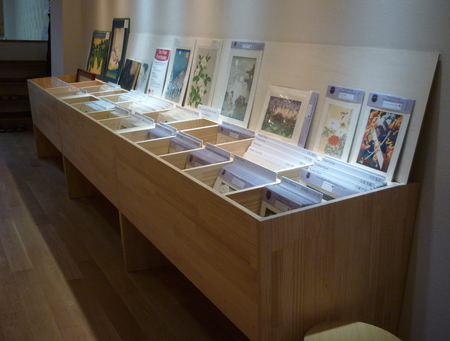
Let's take a look at the new labelling ... (These photos are enlargeable for more readable versions)
Compared to the old record shops, it's more difficult for a print publisher like us to display our offerings, because unlike records, woodblock prints come in many different sizes, with some being vertical and others horizontal. Here's the first group of bins - with our most popular items:
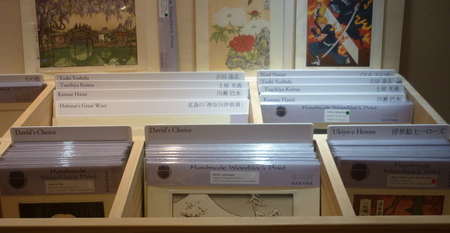
You see the names of the three most popular designers of the shin-hanga prints in the 20th century: Kawase Hasui, Tsuchiya Koitsu and Toshi Yoshida, along with that of Noel Nouet, who produced a small group of designs for the Doi Hanga Company in the pre-war period.
The Ukiyo-e Heroes section speaks for itself ... we are hoping that over the next couple of years we will get that series to the point where it no longer fits into one bin! :-)
Next to those prints are the genre that we call David's Choice (for want of a better term ...). These are prints that we make from the blocks that I myself carved over a five-year period from 1999~2004, in the series that I called 'Surimono Albums'. They range all over: landscape, figures, nature, still life ... you name it. I selected designs that fit two criteria: the image itself had to be interesting, and the construction of the print had to provide me with an opportunity to learn some new technique. The 'interesting' part of that equation seemed to work out, because these two bins together now provide 21% of the total income from this shop!
Moving along, this next photo shows some smaller bins that are a bit of a catch-all:
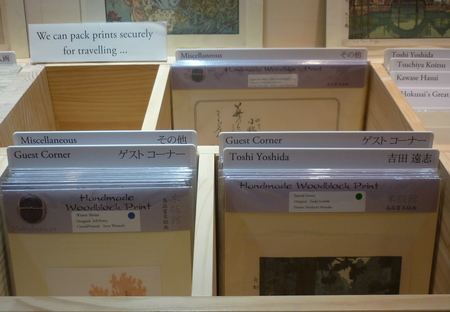
There are some more Yoshida prints here (that didn't fit in the previous bins), and we also keep the prints in our Guest Corner here. These are items from 'outside' printmakers who I have invited to display their work in our shop. I select them based on personal preference, but with a non-negotiable feature - the prints must use Japanese paper and Japanese techniques (the image choice is completely up to the makers). I want these prints here to help show the world that images of many interesting types can be made with the wonderfully flexible Japanese methods ...
That's the end of the first main browser bin, mostly made up of our own publications. Moving down the row, all the rest of the prints in the shop are in what we call the Mokuhankan Flea Market. These are prints that we have not made ourselves, but which we obtain from estate sales, dealer auctions, and other sources. The prints in the previous groups are 'new'; these prints are 'used'.
The genres are mostly self-explanatory, and reflect the popular themes of the old ukiyo-e ... beauties, landscapes, and actors ...
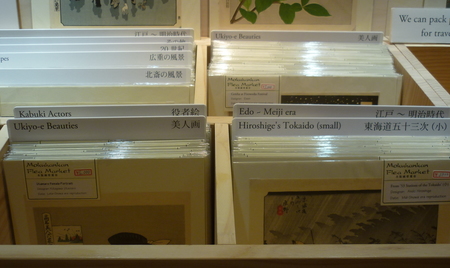
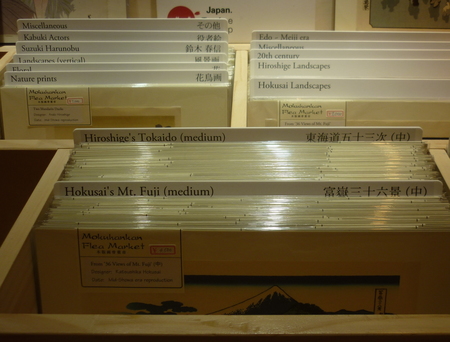
Most of the prints in this section were made in the 20th century by the major reproduction houses (Adachi, Takamizawa and Yuyudo), but further along the row, we have a (growing) selection of original prints from the Edo and Meiji eras:
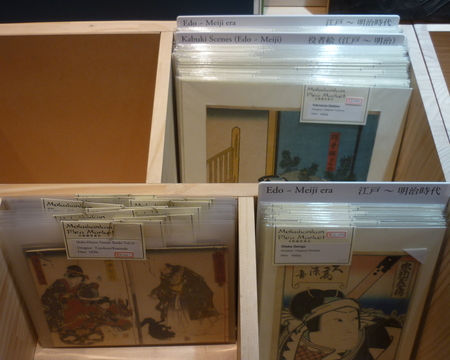
Also visible in that photo is a (small) selection of Edo period novels. Because these are not single sheets, they are difficult to display in a shop environment. We let the browsers know that they can take these out, and look at them over on a nearby lighted table ...
The last section of our browser bins is a bit disorganised. This is where we keep the prints that come in groups - it was very common to publish designs in triptych form back in the old days, and visitors to our shop find these items very attractive, as they make quite spectacular room decorations when displayed in a group together:
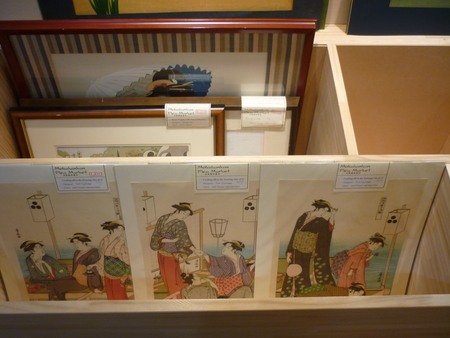
And last - but most definitely not least - we now have room to display some of the larger prints that we have collected over the years. The 1980s - 'bubble years' here in Japan - saw the production of some stunning woodblock prints (and reproductions), and after the passage of a half-century or so, many of these are now finding their way onto the used-print market. We pick these up whenever we can afford to do so ...
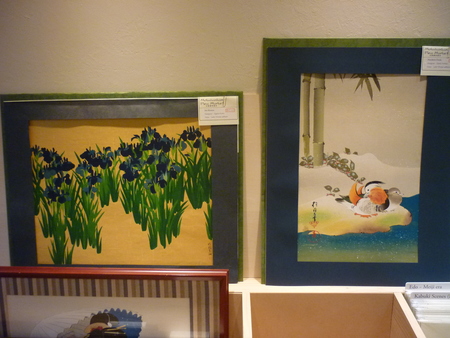
So that's a basic outline of the prints you will find here if you can make your way over to Asakusa!
Add Your Input